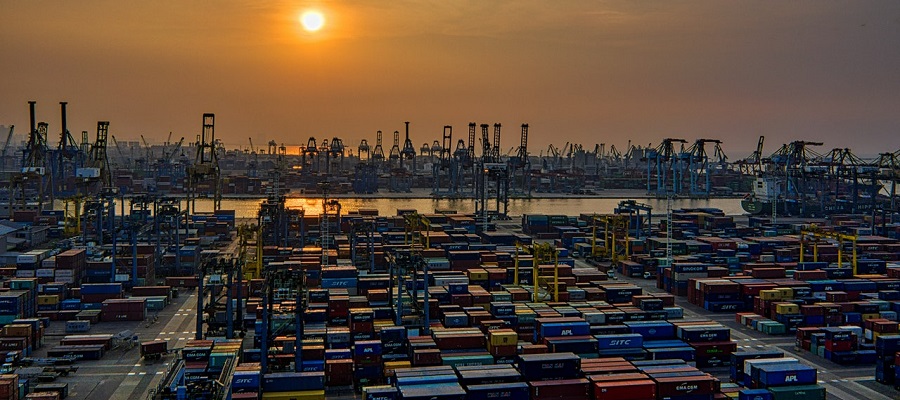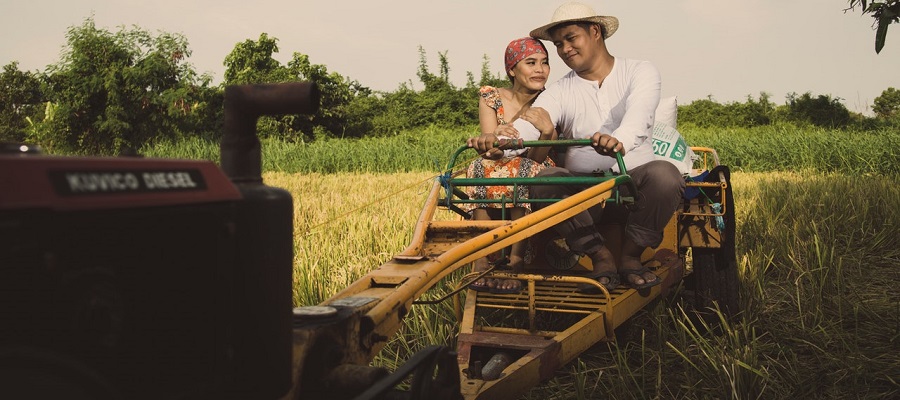If you want to Import agricultural commodities from India online, we would love to help you. Reach out to us via inquiry@foodporty.com or visit our landing page. We're a commodity trading platform like no other. We connect sellers to buyers and negotiate deals. If you want to know more, reach out to us.
It's common that you want to import agricultural commodities from India online. But which agricultural commodities come from India? We will tell you.
Reis - Import agricultural commodities from India online
In India, rice stands for fertility, growth and purity. Therefore, it must not be missing at numerous festivals and special occasions. When Annaprasanne is celebrated, for example. Six months after birth, the child eats cooked rice for the first time - symbolizing entry into the adult world. What is a rite of passage for the child means a great feast for the adults. When a bride enters her new home for the first time after marriage, she kicks over a pot of rice: It is said to bring good luck and wealth. In addition, rice is an integral part of ceremonies and serves as an offering in the temple.
Rice is the staple food in India. Improvements in rice cultivation have made a significant contribution to reducing poverty and hunger among the Indian population. To meet the growing demand due to increasing population and economic development, production would need to be approximately doubled by mid-century in India, as in other developing countries. Against this background, the impact of climate change on rice production is of elementary importance.
At 90%, by far the largest share of global rice production still comes from the growing regions of Asia, primarily China, India, Indonesia, Bangladesh, Vietnam, Myanmar, Thailand and Japan. Outside Asia, Brazil and the U.S. are leaders in rice production, and rice is also grown in Europe, particularly in Italy, Spain, Portugal, Greece, and France and its overseas department of French Guiana.
Thailand, Vietnam, China, USA, India and Pakistan are among the major rice exporting nations. However, they do not always produce the largest quantities in terms of international rice harvests. For example, about 29% of the world's exported rice comes from Thailand, but its share of world rice production is only about 4%. The United States of America also has a high share of the world's exported volume compared to its production. In contrast, India produces about 20% of the world's rice harvests, but has only a small share of export volumes at 6%.
Kaffeebohnen - Import agricultural commodities from India online
Growing conditions and coffee regions in India
Coffee plants like a warm, humid climate with temperatures below 30 °C and some rain. Waterlogging, too much sun and drought, on the other hand, are not for the susceptible coffee plants, which is why they thrive best in partial shade. The Indian highlands meet all these conditions perfectly! Many coffee connoisseurs agree on this. Not without reason, coffee from India enjoys great popularity and is exported all over the world.
India's coffee varieties and plantations
Due to its historical heritage, coffee from India is mainly grown in the southern Indian provinces of Karnataka, Kerala and Tamil Nadu; however, more and more new growing areas are being developed, for example in the east of the country. Different types of coffee are grown at different altitudes.
Arabica and Robusta - both thrive here
India is one of the few countries that grows both Arabica and Robusta coffee. Arabica varieties thrive at cooler altitudes. These include Kents, the original Arabica coffee named after the English farmer. Unfortunately, Kents is very susceptible to the dreaded coffee rust, so Arabica varieties such as S.795 coffee have been bred, the most popular and very high quality coffee variety in India today. In addition, there are other Arabica varieties such as the resistant Cauvery (Catimor) coffee or Selection 9 Coffee. In addition, Robusta coffee, which is considered to be of lower quality, also grows in India, but unlike Arabica it tolerates hot-humid temperatures and lower altitudes.
Well-known Indian coffee plantations
There are an incredible number of coffee plantations in India, but most are very small. If you want to go on a coffee trip, the best place to visit is Coorg in Karnataka. There are several plantations there. For example, Tata Coffee, which, along with numerous other plantations, is part of India's largest coffee group. Or the smaller Silver Brook Estate with a nice homestay right next to the fields, over which sometimes even the wild peacocks typical of India and Sri Lanka flutter. The plantation of MSP Coffee in the mountains of Yercaud in Tamil Nadu is also beautiful.
Coffee from India: Enough shade and mixed crops
Coffee from India grows under very specific conditions. Relatively unique, from the point of view of the Indian coffee authority, is the "well-defined two-tier mixed shade canopy." This refers to a sprawling two-tier canopy that provides sufficient shade for the coffee plants. No wonder, coffee cultivation takes place in a tropical and jungle-like environment. Up to 50 different species of trees and plants grow at different heights on Indian coffee plantations, e.g. silver oaks, fig trees and jambul trees. They not only provide shade, but also enrich the soil with nutrients and protect against soil erosion.
Intercropping, or the use of mixed crops, also plays an important role in coffee cultivation in India. Thus, not only coffee plants grow on the plantations, but also bananas, mango, jackfruit, oranges or spices such as cardamom, cinnamon, clove and nutmeg. This is mainly for efficiency, to make the best use of the cultivated area. A pleasant side effect is said to be the particularly fine notes imparted to the coffee. Only a taste test can show whether there is any truth to this.
Coffee from India: How it tastes
Coffee from India is popular, among other things, because of its naturally low acidity. This sets it apart from its much stronger or more acidic relatives, such as those from Costa Rica. Nevertheless, it is very spicy and aromatic. A particular specialty is the so-called monsoon coffee.
Wheat - Import agricultural commodities from India online
Wheat is by far the most widely grown agricultural crop in the world. Wheat acreage is larger than all other crops combined. The world harvest for 2019 is an estimated 766 million metric tons, with China having by far the largest harvest that year - followed by India and Russia. France (5) is still the largest growing country within the EU, far ahead of Germany (10).
1. China: 131.4 million t
2. India: 99.7 million t
3. Russia: 72.1 million t
Wheat is an annual, mostly ungranulated spike grass. The erect spikelet spindle has two rows of alternating spikelets bearing 3-6 flowers. Grains (caryopses) usually develop from only 3 of the flowers at a time. The grains are elongated and ovoid. On the back side they are crossed by a longitudinal furrow and carry a small hair tuft at the upper end. Fertilization is mainly by self-pollination. Common to all modern wheat varieties is a sturdy spikelet fork (rhachis), which prevents the grains from breaking out of the spike after maturity. Wheat is demanding and requires heavy, nutrient-rich soils of clay or black earth with a high water capacity. Wheat is one of the intensive root crops. The roots can reach up to one meter deep into the soil.
Through targeted cultivation and repeated cross-breeding with wild grass species, selection for advantageous traits took place in early times. A large number of wild grasses were demonstrably involved in the genome of wheat. The wild and cultivated species known today can be systematically assigned on the basis of their chromosome ratios:


